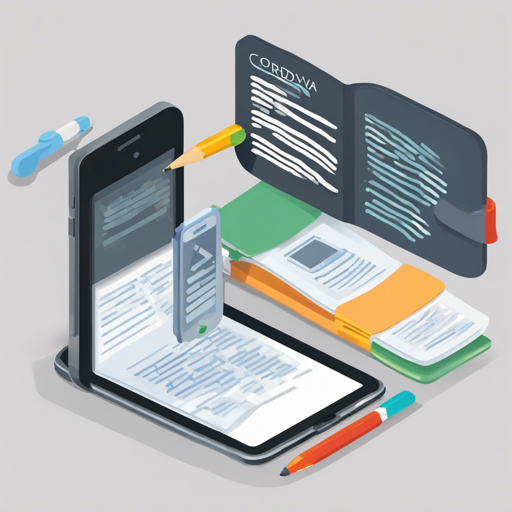Managing files on a device can often feel daunting, especially when you’re working in a multi-platform environment such as Apache Cordova. Fortunately, with the cordova-plugin-file, it becomes as simple as pie! In this guide, we will explore how to utilize this plugin to read and write files on various platforms.
Getting Started with the Cordova File Plugin
The cordova-plugin-file plugin provides an easy-to-use File API that lets you read and write files stored on the device. Before we dive into the coding part, you’ll need to install the plugin. Here’s how:
cordova plugin add cordova-plugin-fileThat’s it! You’re now ready to manage files on your device.
Understanding File Locations
Imagine your device’s storage as a library. Each section of the library represents a different storage location, such as where you might keep your documents, caches, or application files. Here’s a brief overview of the available directories you can use with cordova.file.*:
cordova.file.applicationDirectory: Read-only directory where the application is installed.cordova.file.applicationStorageDirectory: The root directory for the application sandbox.cordova.file.dataDirectory: Location for persistent data storage unique to the app.cordova.file.cacheDirectory: Directory for cached files needing to be easily re-created.cordova.file.externalStorage: For app-specific data files on external storage (Android).cordova.file.tempDirectory: This is where temporary files can be stored.
File Operations: Creating, Writing, Reading and Appending
To give you a better sense of how this works, let’s look at a simplified analogy. Imagine you are a librarian (your app) in charge of a library (the device). Here’s how you can perform actions:
- Creating a File: You create a new shelf (file) in your library where you can store books (data).
- Writing to a File: You fill the newly created shelf with books, effectively storing data.
- Reading a File: When someone borrows a book, you take it off the shelf and hand it to them—this is your read operation.
- Appending to a File: If a patron wants to add notes to a book, you add those notes to the existing book on the shelf.
Code Examples
Let’s take a look at some code snippets that implement these operations:
Creating a File
window.requestFileSystem(LocalFileSystem.PERSISTENT, 0, function(fs) {
fs.root.getFile("myNewFile.txt", { create: true, exclusive: false }, function(fileEntry) {
console.log("File created: " + fileEntry.nativeURL);
}, onError);
}, onError);Writing to a File
function writeFile(fileEntry, dataObj) {
fileEntry.createWriter(function (fileWriter) {
fileWriter.onwriteend = function() {
console.log("Successful file write.");
};
fileWriter.onerror = function (e) {
console.log("Failed file write: " + e.toString());
};
if (!dataObj) {
dataObj = new Blob(["Sample text data"], { type: "text/plain" });
}
fileWriter.write(dataObj);
});
}Reading from a File
function readFile(fileEntry) {
fileEntry.file(function (file) {
var reader = new FileReader();
reader.onloadend = function() {
console.log("Successful file read: " + this.result);
};
reader.readAsText(file);
}, onError);
}Appending to a File
function appendToFile(fileEntry, dataObj) {
fileEntry.createWriter(function (fileWriter) {
fileWriter.seek(fileWriter.length); // Seek to end of file
fileWriter.write(dataObj); // Append data
});
}Troubleshooting Common Issues
While using the cordova-plugin-file, you may encounter some common issues. Below are some troubleshooting ideas:
- Permission Issues: Make sure to request the necessary permissions to access external storage, especially on Android.
- File Not Found: Double-check the file path. Remember, the paths can vary across different platforms.
- Data Loss on Temporary Storage: Ensure you are handling files appropriately, since temporary files can be deleted by the OS.
- If you continue to face difficulties, feel free to reach out for help or to collaborate on AI development projects at fxis.ai.
At fxis.ai, we believe that such advancements are crucial for the future of AI, as they enable more comprehensive and effective solutions. Our team is continually exploring new methodologies to push the envelope in artificial intelligence, ensuring that our clients benefit from the latest technological innovations.
Final Words
With the power of Cordova and the cordova-plugin-file, managing files on your device is just a few lines of code away. By keeping the library analogy in mind, you are well-equipped to create, read, and write files seamlessly.

